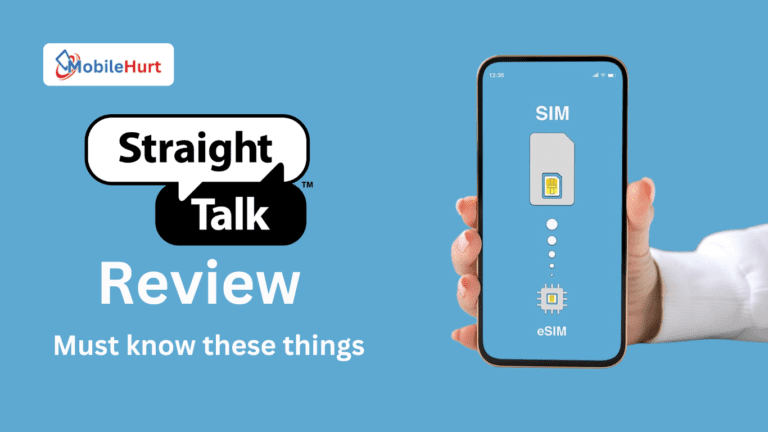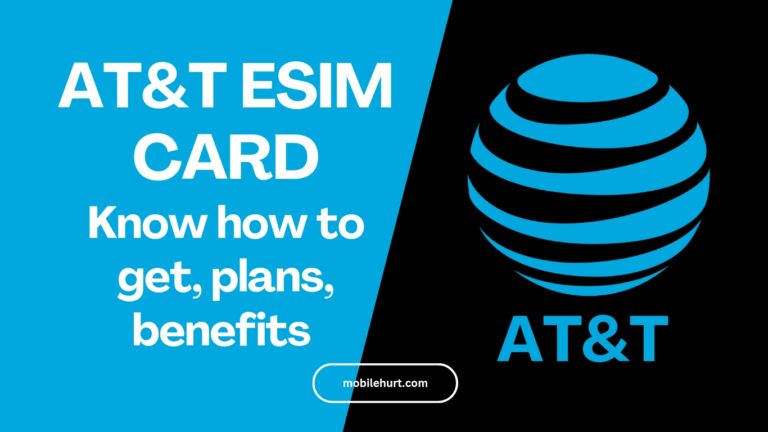eSim vs Physical Sim: The traditional physical SIM card has been the standard for cellular connectivity for many years. However, a new technology called eSIM is quickly gaining popularity. eSIM stands for embedded SIM and it is a digital SIM card that is embedded in the device. This means that there is no need for a physical SIM card to be inserted into the device.
So, which one is better for you, eSIM or physical SIM? In this blog post, we will compare the two technologies and help you decide which one is right for you.
What is an eSIM and Physical Sim?
An eSIM (embedded SIM) is a digital SIM card that is embedded in the device. This means that there is no need for a physical SIM card to be inserted into the device. eSIMs are becoming increasingly popular as they offer a number of advantages over physical SIM cards, such as: Smaller Size, Flexibility.

A physical SIM card is a traditional SIM card that is inserted into the device. Physical SIM cards are still the most common type of SIM card, but they are gradually being replaced by eSIMs.
eSIM vs Physical Sim Pros and Cons
eSIM Pros:
- Easy Network Switching: Changing networks is simpler and quicker with eSIM, usually done through an app. No need to visit a store.
- Trial Testing: You can try different carriers with free eSIM trials before committing to one.
- Dual-SIM Capability: Many phones support both eSIM and physical SIM, allowing you to use two phone numbers on one device.
- Temporary Network Change: While traveling, you can set up an eSIM quickly for a new network without finding a physical SIM.
- Environmental Friendly: eSIM reduces waste as there are no plastic cards or packaging involved.
- Enhanced Security: eSIM is harder to clone, and it provides more time to track a lost or stolen phone.
eSIM Cons:
- Phone Switching Complexity: Moving to a new phone involves more steps with eSIM, including apps and deactivation, compared to just swapping a physical SIM.
- Limited Network Support: Not all networks, especially smaller ones, offer eSIM support. This varies by country too.
- Phone Compatibility: Some phones and networks may not support eSIM, especially less popular models.
Physical SIM Pros:
- Quick Phone Switching: Swapping physical SIM cards is fast and convenient for changing devices.
- Wider Compatibility: Physical SIM works with a broader range of phones and networks.
Physical SIM Cons:
- Damage and Loss: Physical SIMs can get damaged or lost, unlike more secure eSIMs.
- Network Switching Hassle: Changing networks with physical SIMs requires visiting a store or getting a new SIM card, which is less convenient than eSIM setup.
Comparison: eSIM vs Physical Sim
Benefits of eSim vs Physical Sim
eSIM and physical SIM are two different types of SIM cards that can be used to connect a device to a cellular network. Here is a comparison of their features:
| Feature | eSIM | Physical SIM |
|---|---|---|
| Size | Much smaller | Larger |
| Activation | Online or over the air | In-store or by mail |
| Flexibility | Can have multiple profiles | One profile per SIM |
| Availability | Not yet as widely available | More widely available |
| Durability | More durable, as it is embedded in the device | Less durable, as it is a separate piece of hardware |
| Cost | Typically more expensive | Typically less expensive |
Detailed Explanation:
- Size: eSIMs are much smaller than physical SIM cards. This is because they are embedded in the device, rather than being a separate piece of hardware. This makes them ideal for devices with limited space, such as smartwatches and tablets.
- Activation: eSIMs can be activated online or over the air, without having to go to a carrier store. This makes them more convenient to activate than physical SIM cards.
- Flexibility: eSIMs allow you to have multiple profiles on the same device. This means that you can easily switch between different carriers or data plans. Physical SIM cards only allow one profile per SIM.
- Availability: eSIM is not yet as widely available as physical SIM cards. However, it is becoming more common, and most major carriers now support it.
- Durability: eSIMs are more durable than physical SIM cards. This is because they are embedded in the device and are not exposed to the elements. Physical SIM cards are a separate piece of hardware that can be damaged if it is dropped or exposed to water.
- Cost: eSIMs are typically more expensive than physical SIM cards. However, the cost difference is gradually decreasing.
eSim vs Physical Sim Speed test: Which is Fastest?
The speed of an eSIM or physical SIM does not depend on whether it is an eSIM or a physical SIM. Both eSIMs and physical SIMs use the same cellular network and technology, so they should have the same data speeds.
However, there are some factors that can affect the speed of your cellular connection, such as the strength of the signal in your area, the type of device you are using, and the network congestion.
If you are experiencing slow speeds, it is more likely due to one of these factors, not the type of SIM card you are using.
eSim vs Physical Sim Cost: Which one is Cheap?
The cost of eSIM and physical SIM is generally the same. However, there are some carriers that charge a fee for eSIM activation. For example, T-Mobile charges $10 to activate an eSIM.
In most cases, the cost of the SIM card itself is negligible. Most carriers will give you a free SIM card when you sign up for a new plan. However, if you need to purchase a SIM card separately, you can expect to pay around $10.
Ultimately, the cost of eSIM and physical SIM is the same. The decision of which type of SIM card to use comes down to your individual needs and preferences.
eSim vs Physical Sim Signal Strength
There is no inherent difference in signal strength between eSIM and physical SIM cards. Both eSIM and physical SIM cards operate on the same mobile networks and use the same radio frequencies, so the signal strength should be the same for both.
The strength of the signal depends on various factors, including the network coverage in the area, the quality of the device’s antenna, and any potential interference in the signal path.
If you are experiencing poor signal strength with your eSIM, it is likely due to one of these factors, not the type of SIM card you are using.
Can I use eSim and Physical Sim at the same time?
Yes, you can use eSIM and physical SIM at the same time. This is called dual SIM functionality. It allows you to have two active phone numbers on one device.
Some devices have two physical SIM slots, while others have one physical SIM slot and one eSIM slot. If your device has two physical SIM slots, you can use both slots for two different carriers. If your device has one physical SIM slot and one eSIM slot, you can use the physical SIM slot for one carrier and the eSIM slot for another carrier.
To use dual SIM functionality, you need to activate both SIM cards with your carrier. You can usually do this online or over the phone. Once both SIM cards are activated, you can start using them.
To switch between the two SIM cards, you can usually do this by going to the settings menu on your device and selecting the SIM card you want to use.
Dual SIM functionality can be a convenient way to have two phone numbers on one device. This can be useful for people who travel frequently or who want to keep their personal and work phone numbers separate.
FAQs
Is eSIM better than a physical SIM?
eSIM and physical SIM both have their own advantages and disadvantages. Ultimately, the best choice for you depends on your individual needs and preferences.
Can I switch between eSIM and physical SIM?
Yes, you can switch between eSIM and physical SIM. This is called dual SIM functionality. It allows you to have two active phone numbers on one device.
What is eSIM?
eSIM stands for embedded SIM. It is a digital SIM card that is embedded in the device.
What is a physical SIM card?
A physical SIM card is a traditional SIM card that is inserted into the device. Physical SIM cards are still the most common type of SIM card.
Recommended Articles:
- Boost Mobile eSIM Activation: Step-By-Step Tutorial
- Lyca sim activation: How to Activate Lyca sim card in USA?
- Airalo eSIM review: how to activate Airalo eSIM?
- (AT&T) ATT esim card: how to get, best plans, benefits
Conclusion
In conclusion, the choice of whether to use an eSIM or a physical SIM card depends on your individual needs and preferences. If you are looking for a more convenient and secure way to manage your mobile connectivity, then an eSIM is a good option.
| Feature | eSIM | Physical SIM |
|---|---|---|
| Size | Very small, embedded in the device | Larger, removable |
| Security | More secure, less vulnerable to hacking or cloning | Less secure, more vulnerable to hacking or cloning |
| Convenience | More convenient to manage, can be activated remotely | Less convenient to manage, requires physical insertion |
| Availability | Not yet widely available | More widely available |
Ultimately, the best way to decide which type of SIM card is right for you is to consider your own needs and preferences. If you are still not sure, you can always talk to your carrier or visit a local electronics store for more information.








